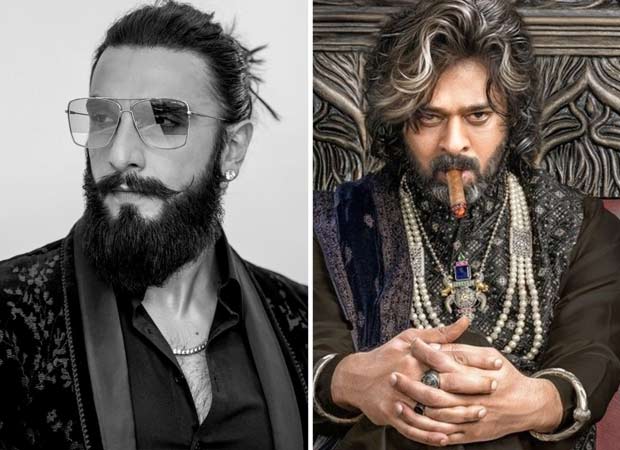Call Me Bae review: Karan Johar may have described Bella Chowdhary aka Bae (Ananya Blacksmith) as the daughter of Poo (Kareena Kapoor), the iconic Gen-Z idol from his 2001 blockbuster family drama Kabhi Khushi Kabhie Gham, but much to the younger actor’s credit, Bae is very much a woman of her own. That’s quite a dramatic, ironical adjective for a South Delhi girl though, born with a golden spoon as she proclaims. It takes time, but we do see Bae evolve. Not Ananya though – she was already there, right from the first episode.

(Also Read – Ananya Panday exclusive interview on Call Me Bae: ‘No one can come close to what Kareena Kapoor did with Poo’)
Bae to Bae-ghar
Call Me Bae has been touted as a “Riches to rags” story, one in which Bae gets Bae-ghar from both her filthy rich families – sasural and maika – to somehow land in Mumbai, where she has to make her own living and carve her own identity. No, Bae doesn’t sleep on footpaths or hustle in local trains. In fact, she sprays sanitizer on the beach bench before devouring her maiden vada pao, and makes her autorickshaw debut and equates the rick to a Mini Cooper – “just a lot breezier.” It’s the dream Bom-Bae struggle for many of us, and yet you never discount her woes.
Creator Ishita Moitra, director Collin D’Cunha, and co-writers Samina Motlekar and Rohit Nair chisel out a tone that’s unapologetically frothy, decidedly sanitized, yet progressively meaningful. Like what Ishita achieved with Rocky Randhawa (Ranveer Singh) in Karan’s blockbuster from last year, Rocky Aur Rani Kii Prem Kahaani, Rocky remains the West Delhi ka launda at heart from start to finish, yet you see an evolution within. Similarly, Bae doesn’t go all Poo bani Parvati, but merely goes with the flow, open to everything that life throws at her, instead of going all “mera toh itna life kharab ho gaya” from Kangana Ranaut’s Queen.

This ability to be alive to life’s offerings also comes from Bae’s innate passion to keep adding to her arsenal. Sure, she hasn’t exactly navigated the crests and troughs of the beast that is life, but she’s picked up an experience, made a new friend, and finished a new course, wherever she has landed. That makes Bae a kaleidoscope queen rather than a monochromatic princess. Whether it’s dressing up for the occasion, quoting dear society friends like Raghu (read: Raghuram Rajan) when she has to talk Economics, or having completed a course for every skill that she yanks out of her kitty, Bae almost turns into a superhero we never had, didn’t deserve, but somewhere craved for.
Not an Instagram Reel
Ananya just gets Bae. Whether it stems from her superpower to distance herself from her privilege and examine it from the point of view of a Siddhant Chaturvedi, or merely from the solid crutches of impeccable writing, Ananya makes sure Bae is consistently fun, unassumingly self-deprecating, and surprisingly much more. Filmmakers have exploited her clueless appeal smartly (Gehraiyaan) and not so smartly (Liger) in the past, but as she demonstrated in her last film Kho Gaye Hum Kahan, Ananya is able to nail parts which require her to push herself beyond her perceived persona and potential.

However, an 8-part series is not an Instagram Reel. It demands a character graph, irrespective of the harmless fun you bring to the table. An inertia sets in in the 3rd-4th episode, where the pace of her growth slackens. You feel like unloading all that Poo sass on the writers, “What are we waiting for? Christmas?” or responding to a friend who asks you “Bae tonight?” with a “Tell me how it was!” But the plot turns PHAT (Pretty Hot and Tempting!) when Bae starts locking horns with Satyajit Sen (Vir Das), her Arnab Goswami-esque boss at the TV news channel, who frowns upon social media journalism and considers primetime news the gold standard.
Given Ishita Moitra has been a journalist herself, she plants various Easter eggs across the newsroom. For instance, there’s a reporter whose only job is to play dress-up for the camera – he’s a tendua (leopard), a cop, or a poor mother who has lost her kids to a tragedy, depending on what the news of the day is. Vir seems to be having a ball playing his antithesis as the irredeemable satya-spilling siren, who serves as the perfect foe to Bae, lending her an underdog arc to scale and win our hearts with.
In the process, issues like MeToo and data leak crop up, but the tone never wavers. It has no ambition to turn grave, and casually takes along these evils like they’re second skin. As much as that irks the brain, the heart doesn’t mind because by then, we’ve become as inclusive, accommodating, and adventurous as Bae herself.

Blessing or Bae-n
Bae’s magic portion doesn’t come without its fair share of hiccups. Between her iridescence and Satyajit’s bleakness, some supporting characters struggle to find their space. For instance, Gayatri as Bae’s mother is smart and sassy, but Mini Mathur could’ve turned her into gold if she wasn’t saddled with tepid lines. If her comic timing in Mind the Malhotras is anything to go by, she’d have made Gayatri a far quirkier character. Varun Sood’s Prince, the gym trainer who bonds with Bae because nobody gets them, isn’t more than a gentle giant who also has the brains for tech and hacking along with the muscles. Green flags galore in this show, as Gurfateh Pirzada’s Neel makes for an amiable, idealistic journalist who needs to spruce it up and take a dive into the unknown to make it work. Vihaan Samat as Bae’s hubby Agastya makes you root for him with his puppy eyes and boyish charm, despite his entitled, chauvinistic leanings.
The men get their strokes, but the canvas of Call Me Bae pretty much belongs to its women. The thread of Behencode (“it’s older than the Da Vinci Code”) runs far, wide, and deep into the show’s DNA. From eventually discovering a more conformist sister in her mother to winning over her competitive colleague-turned-flatamte, Bae gets a behen intervention at every stage that smoothens out her journey. Muskkaan Jaferi lives upto her last name by milking her witty one-liners to its last syllable and charging up the entire room with her livewire presence. Lisa Mishra makes an incredibly restrained acting debut as Harleen, the lovelorn producer of Satyajit’s show. All the sisters infuse blood into arteries of their own instead of only servicing the central spine that is Bae. Many more turn up along the way – Sayani Gupta, Karishma Tanna, and even Faye D’Souza.
But these cameos aren’t gratuitous – they’re short but well-rounded parts, except a random shoutout by Orry that announces Bae’s arrival on the scene. There are winks to Poo in the form of dialogues like “Minus” and “Special class today” (yes, with that exact gesture). But neither Kareena Kapoor nor costume designer Manish Malhotra pop up for cameos even though there was narrative scope for both. Speaking of costumes, Anaita Shroff lends a tremendous amount of life to the wardrobe, of not only Bae but even Satyajit (Vir Das wears shorts while on air because the audience can’t see him below the belt, in more ways than one). Bae wears dot eye liner in a scene that accentuates her moist eyes or mismatched danglers in a scene in which she’s conflicted.
The costume department is in complete sync with the writing department on underlining that for wealthy, sheltered South Delhi girls like Bae, branded clothes and accessories are an escape beneath the protective layer of exhibitionism. In many ways, these are the only emotional support system they can afford – particularly when living in a family who see them as trophy wives/daughters than trophy clinchers themselves. On her biggest self-made professional day at the end, Bae doesn’t vibe with her usual glitzy, blingy favourites. She chooses a dark blazer instead, under which she conceals her bleeding red top. In that moment, she becomes BAE in its literal sense – she chooses her true happiness, Before Anyone Else.
Call Me Bae is streaming on Prime Video India.


























































